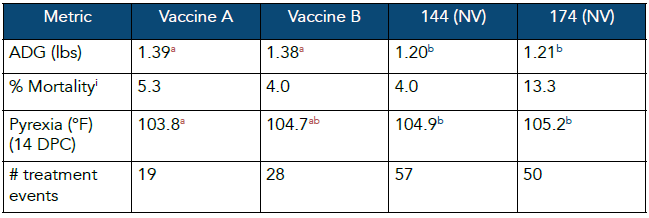
In partnership with Boehringer Ingelheim Animal Health USA Inc., Pipestone Research has provided a rapid response to bring science-based answers to managing the emergence of PRRSV 144 L1C. Based on field observations from practitioners and producers, stating that, “This is the worst strain of PRRSV ever,” “Vaccines don’t work anymore,” and “Biosecurity protocols are ineffective,” the team determined that immediate action was needed.
This industry-wide feeling of panic encouraged PIPESTONE to respond using science to generate answers to these concerns. PIPESTONE Chief Veterinary Officer, Dr. Joel Nerem, responded with a Call to Arms, “Answering difficult questions with production-driven research for farmers is our wheelhouse.” stated Dr. Joel Nerem. “We need answers. Let’s do a study and share the results.” Pipestone Research team members, Dr. Scott Dee, Roy Edler and Dan Hanson put the wheels in motion, joined forces with Dr. Amanda Sponheim, Dr. Reid Philips and Justin Rustvold from Boehringer Ingelheim Animal Health USA, Inc., and completed three studies targeting the field concerns, including:
Study 1 (Pathogenicity): Is PRRSV 144 worse that PRRSV 174?
Design: Naïve pigs were challenged with either PRRSV 144 or PRRSV 174. Outcomes included average daily gain (ADG), percent mortality, viral load, clinical scores, pyrexia and number of treatment events.
Results: Across all metrics, PRRS 174 was more pathogenic than PRRSV 144.
Study 2: Do vaccines still work on PRRSV 144?
Design: Pigs were vaccinated either with Ingelvac PRRS® MLV (BI) or Prevacent® PRRS (Elanco) and compared to a non-vaccinated control group. Vaccination was applied according to label instructions and challenge occurred 28-day post-vaccination.
Results: Both vaccines were effective against PRRSV 144 and performance in vaccinated groups was significantly better than non-vaccinates.

ab means differ P≤0.05
i trending towards significance P=0.06
Study 3: Can biosecurity protocols prevent PRRSV 144 introduction?
Design: Six biosecurity protocols were tested on pigs challenged with PRRSV 144. The study evaluated transmission of 144 through feed, using natural feeding behavior, transmission via contaminated personal and fomites (boots, coveralls and hands), the ability of PRRSV 144 to be detected in aerosols from infected pigs, survival in slurry (14 vs 21 days) and whether the transport (feed truck) could serve as a vehicle for viral movement between sites. In addition, intervention strategies, including 2 disinfectants (Ag Forte Pro or Synergize™), 2 feed mitigants (Guardian™ or Sal CURB®), air filtration (Camfill Farr MERV 14) and a shower protocol with a boots/coverall change were tested to determine if the respective risks could be managed.
Results:
- Disinfectants: Ag Forte Pro and Synergize™ neutralized PRRSV 144 after 60 minutes of contact.
- Contaminated feed: PRRSV 144 was transmitted through feed via natural feeding behavior. Both feed mitigants (Guardian™ or Sal CURB®) prevented infection.
- Feed transport: PRRSV 144 survived in the feed transport model and infected pigs.
- Survival in slurry: PRRSV survived in slurry for 14 days, but not 21 days.
- Contaminated formites/Shower in protocol: Following 30 minutes of contact with infected pigs, PRRSV 144 was detected on hands, boots and coveralls of personnel. In the absence of a shower and clothes/footwear change, virus was transmitted to contact controls. After a shower and clothes/footwear change, virus was not transmitted to contact controls.
- Filtration: PRRSV RNA was detected in 28%-43% of interior air samples during the challenge period. In contrast, there was no detectable PRRSV 144 in exterior air samples post-filtration.
In closing, under the conditions of this study, it appeared that PRRSV 174 was more pathogenic than PRRSV 144 and modified live virus vaccines were effective against PRRSV 144. In addition, standard protocols of biosecurity such as disinfection, showering, changing boots and coveralls between infected and non-infected populations are still effective. Aerosols and feed appear to be risk factors for PRRSV 144 spread, but risk is reduced through filtration and feed mitigation. Finally, the risk of contaminated transport (feed truck) continues to be a risk factor for viral movement between farms.
As a result of this study, PIPESTONE and Boehringer Ingelheim Animal Health USA Inc., recommend keeping up on all practices related to biosecurity. “You know what to do, don’t give up,” said Dr. Scott Dee, PIPESTONE Director of Research. “We know the routes of transmission and how to manage these risks. Don’t take shortcuts, keep using modified live virus vaccines according to label and don’t relax. PRRS season is almost upon us!”
By: Dr. Scott Dee Director of Applied Research, Pipestone Applied Research
